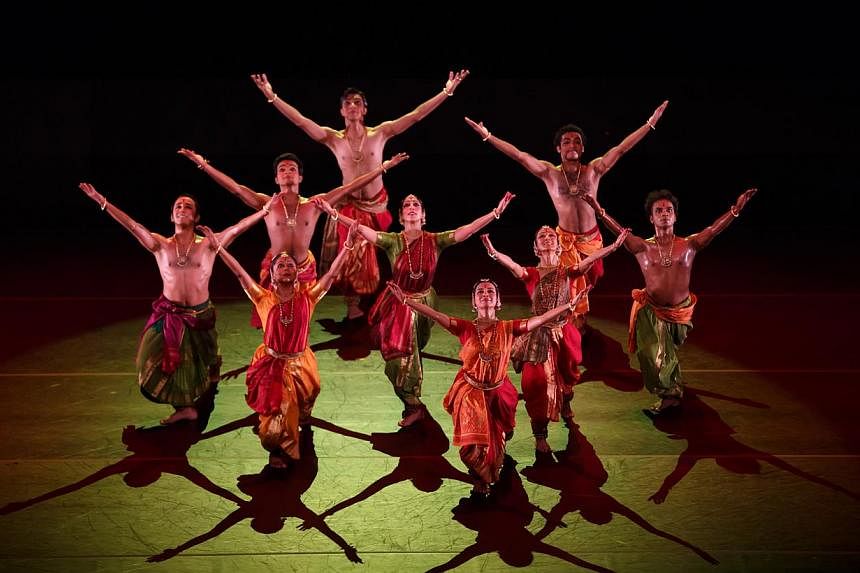Disha - A Vision by Spanda
Esplanade Theatre/Friday
As in any dance class, Leela Samson's company Spanda took the audience on a journey that started with the basics before progressing to more complex ideas, in this performance at Kalaa Utsavam, Esplanade's Indian Festival of Arts.
Samson is one of India's foremost Bharatanatyam dance artists, having been schooled at the renowned Kalashetra. Her company presented a programme consisting of six bite-sized works that covered the breadth of Bharatanatyam, showing Samson's versatility in keeping the cherished aspects of tradition while at the same time acknowledging the dance form's transition into the present day.
The first two works were an appropriate starting point for the evening. Whittled down to the form's purest essence, they focused on the most fundamental elements that make up any dance - time, body and space. The beauty of the technique was clearly displayed, as simple extensions of the arms were complimented with the most basic hand gestures (called mudras).
Diagonal lines turned into circles as strong, grounded stances developed into breezy, galloping runs. Symmetry was the order of the day, and this showed off the disciplined classicism of Bharatanatyam. It was also a beautiful compliment to the mesmerising live music.
Those two works also showed a contemporary method of presenting Bharatanatyam because they were stripped of all storylines. Traditionally, the dance form is known to be tied strictly to narratives that stem predominantly from religion and legend. These two works sought beauty not from the stories they told, but from movements and music.
This drew focus to a dance form known for its exacting detail, not only to the limbs of the body, but also to the smaller parts that are often overlooked when one thinks of dance. Wrist flicks and even eye movements serve to accentuate larger physical expression.
Following this rather physical introduction, the next few works brought in narratives. Now, the angular precision softened to include fluid rotations of the spine along with highly stylised facial expressions. Together with the hand gestures, stories of gods, cosmic space, people and nature were depicted.
The fifth work, Padam, was a wonderful tableau celebrating the emotional power that is brought about by the expressions of face and hand. It was also refreshing to watch after the spectacular whirls and percussive footwork of the other works. The stylised expressions did not seem even a bit contrived. They looked like second nature to the dancers, a testament to their mastery of the technique.
Finally, as if to make a statement, Spanda ended the evening with a work that once again celebrated the core essence of the dance form without the narrative. It was a statement that proved that tradition could exist in the contemporary without being watered down.
What Samson and her company had shown was that if one is dedicated and honest to one's art form, it can transcend time, trend and geography. Spanda's performance was an enchanting insight into Bharatanatyam.

